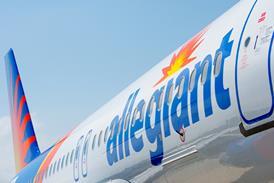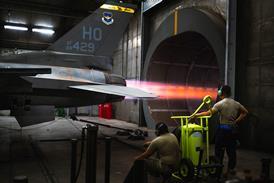A lot has changed since the helicopter leasing market began to take off a couple of years ago.
For a start, the number of lessors has proliferated. A sector that began with two initial companies – Lease Corp International (LCI) and Milestone Aviation – was soon bolstered with a third in the form of Waypoint Leasing, with Macquarie Rotorcraft Leasing and Lobo Leasing following later.
And that picture is still more complex following the January 2015 acquisition for $1.78bn of Milestone by fixed-wing leasing giant GECAS, instantly giving the Dublin-based lessor – brainchild of former NetJets supremo Richard Santulli – the leverage and reach its rivals can only dream of.
In the background, the market has also altered. Initially, most operating lessors were heavily weighted towards providing those serving the offshore oil and gas market with medium and heavy helicopters – notably the Airbus Helicopters H225 and Sikorsky S-92. But now the oil price has plummeted, leading to overcapacity in the sector and a desperate scramble by operators to reduce costs.
Michael Platt, chief executive of LCI, said that although it has seen a slowdown in the replacement cycle at operators, there has been relatively little impact on its day-to-day business. This is in thanks to it being less exposed to the heavy end of the segment, with an orderbook predominantly comprising medium- and super-medium-class helicopters.
“We are not seeing big cutbacks by any stretch of the imagination. But there is a slowdown in the replacement cycle,” he says. And even in regions – the North Sea, for instance – where the slowdown is most marked, “we are seeing pockets of activity”, continues Platt.
However, he does think the market is shifting: “What’s really changed over the last 18 months for all leasing companies is that we are all diversifying.”
So, rather than simply having its gaze fixed offshore, LCI now has clients in the emergency medical services (EMS), search and rescue, and renewables industry sectors. It also now engages in sale and leaseback transactions with operators.
“We continue to diversify so that during these temporary changes we won’t see such a big impact on our fleet. It has been a concerted effort by us and we see others doing the same thing,” he says.
Waypoint, which recently secured market investment of $200m, has committed part of its orderbook to the EMS market and expects to deliver its first Airbus Helicopters H145 to a customer later this year, says chief executive Ed Washecka.
Although Washecka acknowledges that despite there being lower demand for oil and gas helicopters, thanks to manufacturers reining in production, “there are still opportunities for lessors.
“We try to show operators the benefits of having a diverse capital structure – a mixture of owned, leased, and financed helicopters,” he says. The exact proportions of that mix are down to the individual operator to decide, he adds.
Waypoint is largely unperturbed by GECAS’s arrival in the market, believing that having two big firms in the space means that it helps customers to “ensure they have a competitive marketplace”.
Platt also plays down the significance of the deal: “Milestone was the big guy on the block, before and after GECAS,” he notes.
He also believes operators are yet to fully exploit the potential offered by the lease market. In the fixed-wing world, around 50% of the fleet is leased, he says, compared with 5-6% at the heavy end of the helicopter market.
“I think that over time, the question is how much it will nudge up into the 40-50% range,” says Platt.
“Operators are not in the business of taking residual risk on helicopters or remarketing equipment. That’s what we do. People naturally migrate to their areas of expertise as that’s where they make the best returns.”
As for the future, Washecka is cautious. He has long predicted consolidation of the industry and is yet to alter that viewpoint.
“There is not room for everybody in the helicopter leasing space. That becomes more true going forward,” he says.
Source: FlightGlobal.com























